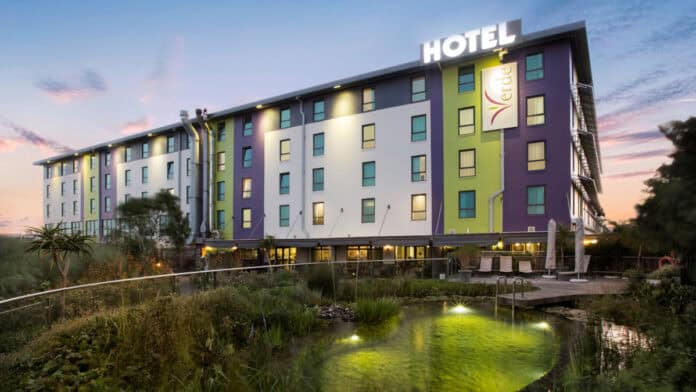Green building: Key to a low carbon future
By Diane Silcock
THE Global Status Report for Buildings and Construction 2024/2025 published by the UN Environment Programme (UNEP), states that the sector consumes 32% of global energy and contributes to 34% of global CO2 emissions. The report noted that the sector relies heavily on materials such as cement and steel, which together account for 18% of global emissions and generate a significant portion of construction waste.
With this in mind, Green Building Council South Africa (GBCSA) – South Africa’s certifier of green buildings and projects – is highlighting the urgent need to transform how buildings are designed, constructed, and operated to secure a sustainable future.
The Green Building Business Case towards reducing carbon emissions
During World Green Building Week 2025 (8–12 September), the GBCSA launched its latest study, ‘Green Building South Africa: A Guide to Costs & Trends’, through a dedicated webinar. This is Southern Africa’s definitive study on the cost of green-certified buildings, using empirical building costing data to understand how little going green truly costs.
Dr Danie Hoffman, Lead Researcher at the Department of Construction Economics at the University of Pretoria, presented the findings of the 4th Edition, and GBCSA’s panel of experts discussed the trends in the green construction cost premium.
GBCSA Head of Marketing and Communications, Georgie Chennells, says, “The study has received international acclaim and it’s one of a kind globally. It essentially unpacks the cost of building a green certified building; Green Star certified versus non-certified.” These costs are connected to the investment performance of certified buildings delivering a clear ‘Green Building Business Case’.
Chennells says this study goes hand in hand with the MSCI South Africa Green Annual Property Index. The MSCI data shows that green-certified buildings consistently outperform non-certified ones, delivering higher returns, lower vacancy rates, and greater appeal to ESG-focused investors. Moreover, a green building may qualify for green finance.
18th Green Building Convention 2025 (11 to 13 November)
The GBCSA annual convention being held in Cape Town this November from the 11th to the 13th, is the premier platform for professionals in the built environment—and anyone with a passion for sustainability—to connect with industry thought leaders and explore the latest trends in green building.
“Through these initiatives, our aim is to inspire the business sector and global stakeholders to invest in green,” says Chennells. “Big leaps are required if we are to reach climate targets, and part of that is building up to COP13. Our call to global leadership is to invest more in green buildings, green infrastructure, and the processes and policies that enable them.”
The rating tools GBCSA employs to certify sustainable buildings are Green Star, Net Zero and IFC’s EDGE. Beyond certification, they educate by providing green building training for all stakeholders in the built environment, advocate for policies that support an enabling environment for green building development, and engage in research. Through collaboration with international organisations such as the World Green Building Council, as well as technical experts, members, government, businesses, and civil society, they drive systemic change, and champion green building excellence.
The built environment clearly has a responsibility towards reducing its carbon footprint to achieve climate goals. Green building certification not only supports this objective but also offers a powerful way for developers, owners, and investors to future-proof assets, mitigate risks, and demonstrate meaningful ESG performance.
